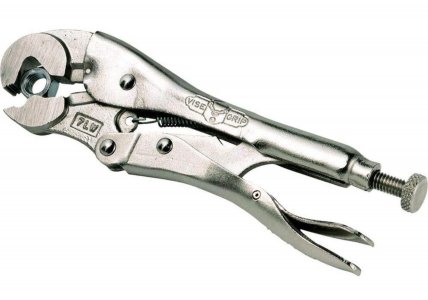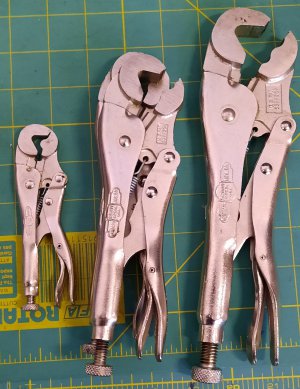- Joined
- Sep 3, 2023
- Messages
- 218
I think Jake M offered some really good insights. I learned/ increased my knowledge a bit myself. Might help me in the future, if I remember it.
My knowledge offering. My dad used to turn wrenches back in the 60’s and 70’s for a living. He taught me a heating technique that usually works 100%, if I take the time and patience to do it.
Heat the nut red hot three times, and let it cool slowly each time. Usually it will loosen nicely.
My problem is, I usually will be impatient and put a wrench on it as it red hot the first time. Probably 50% if the time, it works. But, if it doesn’t, I’ve already started the rounding of the nut, or what’s left of it.
I’m learning the older I get, to be more patient and do the three heats, especially if it is in a bad place to get other method’s for removal too.
One reason I think this helps is during the heating the nut and bolt expands. But when cooling down, the metal will naturally shrink more than it was normally. If there was rust between the threads locking the fasteners together, the heating and cooling cycles end up breaking the bond between the threads, and the nut may actually cool a bit bigger because the stud and rust actually shrink as much as it can, but the nut can expand a bit and stretch when red hot, and then does not shrink as much when cooling.
So if time is one your side, I would soak for a couple days, then use the hammer technique trying to get the stud and nut to move a bit sideways breaking the bond, and then the heating and cooling cycles.
The heating adds maybe 5 minutes actual working time, but the cooling adds maybe 30-90 minutes waiting time. It helps if you have other jobs/ projects to work on to take your mind off the waiting time.
Sent from my iPhone using Tapatalk
My knowledge offering. My dad used to turn wrenches back in the 60’s and 70’s for a living. He taught me a heating technique that usually works 100%, if I take the time and patience to do it.
Heat the nut red hot three times, and let it cool slowly each time. Usually it will loosen nicely.
My problem is, I usually will be impatient and put a wrench on it as it red hot the first time. Probably 50% if the time, it works. But, if it doesn’t, I’ve already started the rounding of the nut, or what’s left of it.
I’m learning the older I get, to be more patient and do the three heats, especially if it is in a bad place to get other method’s for removal too.
One reason I think this helps is during the heating the nut and bolt expands. But when cooling down, the metal will naturally shrink more than it was normally. If there was rust between the threads locking the fasteners together, the heating and cooling cycles end up breaking the bond between the threads, and the nut may actually cool a bit bigger because the stud and rust actually shrink as much as it can, but the nut can expand a bit and stretch when red hot, and then does not shrink as much when cooling.
So if time is one your side, I would soak for a couple days, then use the hammer technique trying to get the stud and nut to move a bit sideways breaking the bond, and then the heating and cooling cycles.
The heating adds maybe 5 minutes actual working time, but the cooling adds maybe 30-90 minutes waiting time. It helps if you have other jobs/ projects to work on to take your mind off the waiting time.
Sent from my iPhone using Tapatalk



